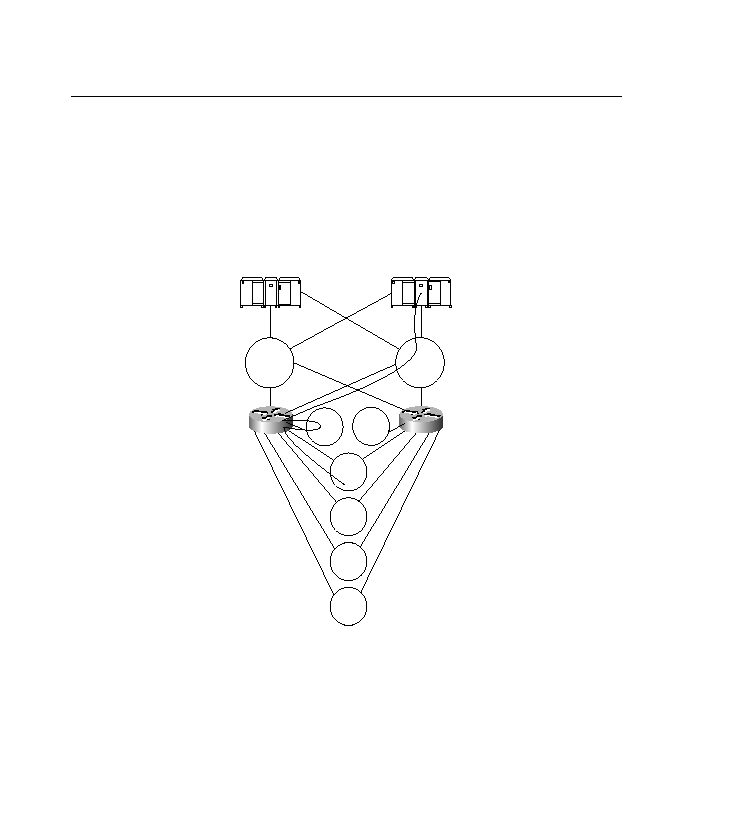
dual-backbone Token Ring design. The backbone Token Rings are collapsed into the backplane
of two routers. Each router has an internal virtual ring 7 that is bridged to the client rings. In
this case, there are four client rings. This method provides for redundancy and controls explorer
looping by making the virtual ring the same number (7). As a result, explorers from the client
rings do not traverse ring 7 twice because the rule is to never visit the same ring twice.
Coupler (TIC) addresses. You should use it if SNA explorer packets are destined for a single
FEP on only a single ring, as depicted in Figure 14-5. This design feature creates an explorer-
packet reply cache on the router. The entries are reused when subsequent explorer packets need
to find the same host. There is no possibility of redundant paths.